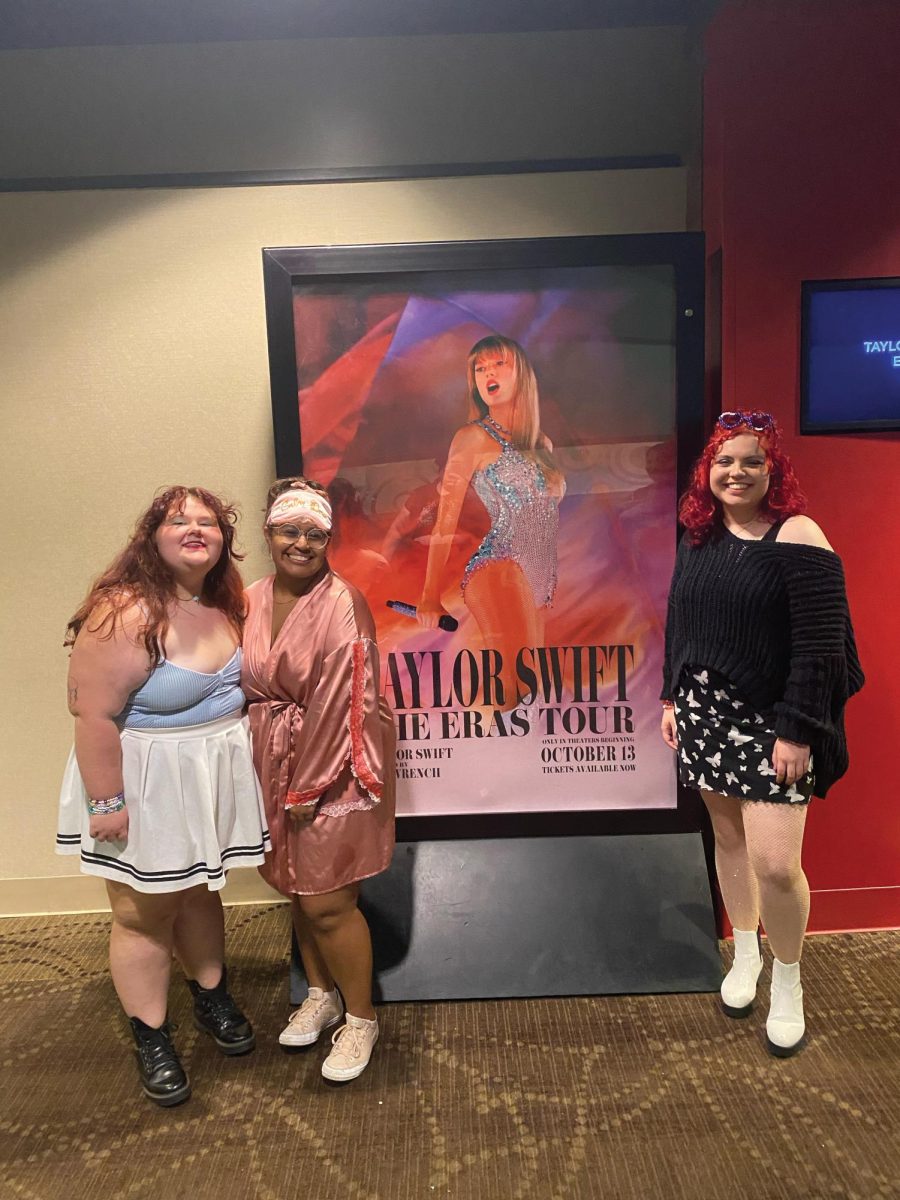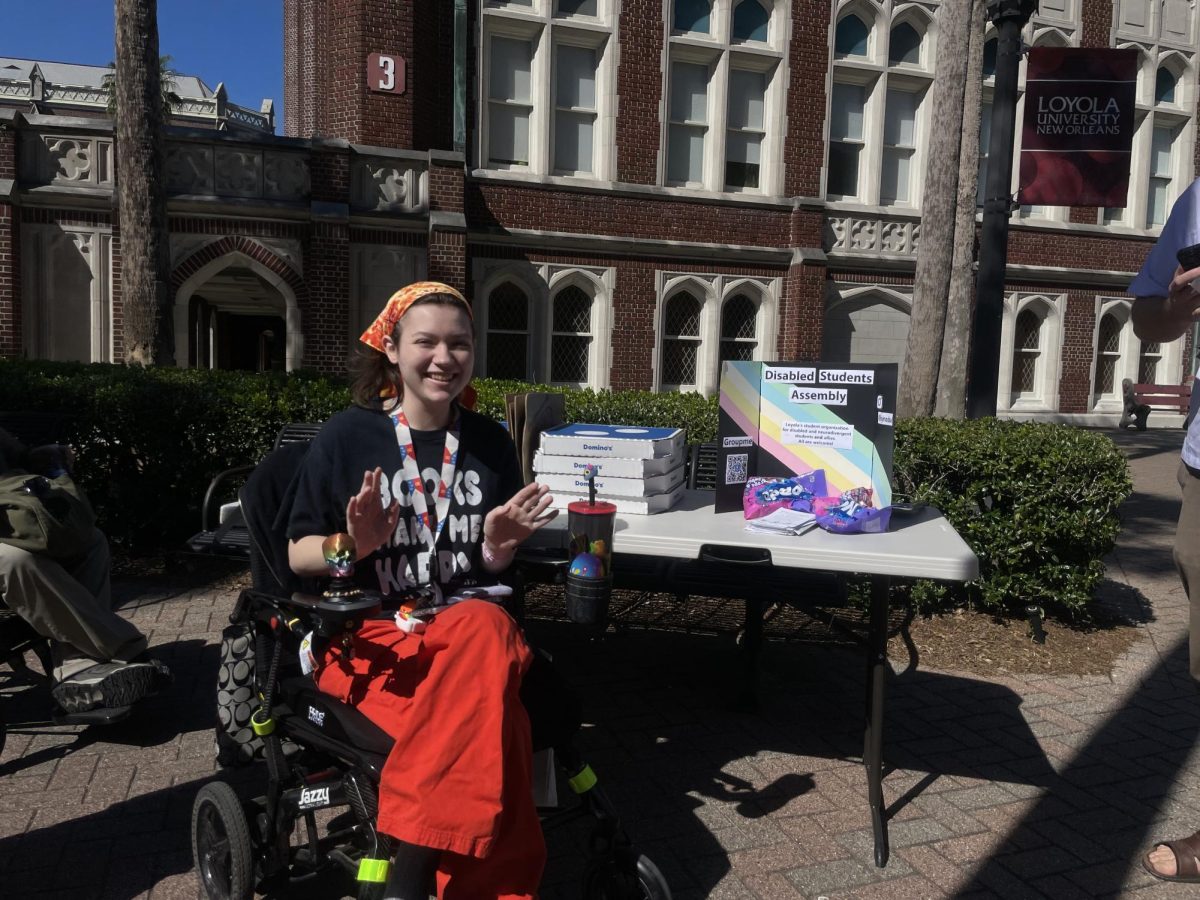Editor’s note: This review contains spoilers for “Spider-Man: Across the Spider-Verse”.
The magnificent Miles Morales is back and more spun up in chaos than ever. Before the trivial “Barbenheimer” weekend, the summer box office kicked off with the widely anticipated “Spider-Man: Across the Spider-Verse”.
The dazzling film opens with fan favorite Spider-Gwen (Hailee Steinfeld), living through the difficulties of American teenage life. Her world comes crashing to audience realization when she is confronted by her father, a New York City Police Captain who has been relentlessly tracking down Spider-Woman (Issa Rae), unbeknownst to him, his own daughter. After the Vulture (Jorma Taccone) flies in for an attack, members of the Spider-Verse, Miguel O’Hara (Oscar Isaac) and Jess Drew (Spider-Woman’s real name), arrive at Earth-65 (the earth of Spider-Woman’s universe,) to aid Spider-Woman in her fight. After subduing the Vulture, she unmasks herself to the police captain, and is confronted with either being taken into custody by her father or going into the Spider-Verse. As this lays the groundwork for the narrative, the film quickly snaps back to our treasured Spider-Man, Miles Morales (Shameik Moore), in his home on Earth-1610. While running late for school, the webbed hero gets back into action by fighting a new, laughable villain, calling himself the Spot (Jason Schwartzman). The Spot quickly proves himself to be a worthy foe, as he is able to create portals, transporting himself into multiple locations and as a result has permanent disfigurement to his body, all at the fault of Miles. Gwen surprises Miles in his world, much to his delight as he has clearly been struggling with missing her. Bound again at the hip, Gwen travels to India on Earth-50101 and Miles secretly follows her. While there, Miles saves a pedestrian, thinking he is saving people as he does best. However, a rude awakening comes when O’Hara and Jess Drew arrive at the scene and take Miles back to the Spider-Society, with nearly 300 different versions and variations of the beloved hero. The brilliant spectacle of this place comes crashing down when Miguel O’Hara, the main antagonist, informs Spider-Man that he interrupted a canon event, and furthermore cannot prevent his own: the death of Miles’ own father on his home world. By about the 45 minute mark, the story is running and in full swing.
One of the hallmarks that made its precursor, Into the Spider-Verse, so popularly acclaimed was its excellence in animation. Unlike other Disney or Pixar animation films, the “Spider-Verse” finds a way to lean into an overpowering, glorious hodgepodge of styles, making the experience overwhelming in the best way and keeping audiences on the edge of their seats. They also don’t do it solely for the extravagance of the animation, they find a way to intertwine it with the emotional world of Miles and other characters, particularly Gwen’s. While there are numerous things worthy of highlighting that others are enthusiastic about, my personal favorite part of all of the animation was that of Gwen’s world. Beautiful pastel watercolors blending into one another, melting and ever changing and morphing together with Gwen’s consistently conflicting emotional world. When Gwen returns to her world and her father finally accepts her as Spider-Woman, the subtle geometric shapes and the encapsulation of pink still makes my hair stand to think about. She is treated with such affection that it is hard for any fan to not love her. Of course, it would be impossible to discuss this stunning visual art without touching on Miles’ world. Also having the backdrop of New York, Miles’ world looks significantly different than that of Gwen’s. Full of black and Latino influences, his world dances vibrantly on the silver screen. While it is full of classic animation to the original character of Spider-Man himself, Miles is always distracted and this is reflected in the setting around him. He struggles with balancing school, his family, his yearning for Gwen, and his superhero responsibilities. The animation chooses to show his world upside down and for everything he encounters to be maximalist and in your face. It allows the audience to empathize with him and his constantly insistent world. Some other clever choices the film made were the use of small comic book notes, such as references from the comic. Stylized well, it adored fans with easter eggs and helped other, more casual viewers stay informed without taking time nor attention from the narrative.
Another thing cherished by fans of the first film is its excellent, hip-hop laden soundtrack. It featured now famous songs such as, “Sunflower,” by Post Malone and Swae Lee along with others. This sequel once again does not hold the punches, with instant classics like Metro Boomin’s tracks, “Am I Dreaming,” “Annihilate,” and the original score’s theme for Miguel O’Hara, becoming a popular sound on TikTok. Another fun easter egg for music fans is in Spider-Society, as Miguel O’Hara shows the young Spider-Man around, a live action Donald Glover appears as the Prowler from his universe, now serving time in the society. Its tongue-in-cheek nature comes not only from Glover’s appearance as the villain in 2017’s Spider-Man:Homecoming, but also from a scene when a younger Glover was in the hit comedy show, “Community”, as Troy Barnes. In one particular episode, Glover wore Spider-Man pajamas, inspiring the creation of the black hero on screen now.
As if all of these are not testament to the sensational, immersive experience that is this film, it thrives off the page into theaters because of the depth of its story. While there may be the argument of the live action, No Way Home, to be a tribute to Spider-Man, Spider-Verse celebrates Spider-Man for what he is in the comics, not simply his cinematic universe. Miles, at the end of the day, is the most empathetic hero one can find; courageous, in over his head, and incessant on proving that he can save everybody. The beauty comes from this gut punching realization that it is neither in his nature nor his capability to save everybody, despite how badly he may strive to. As mentioned earlier, Miles is confronted by O’Hara after disrupting a canon event. In this society, a canon event refers to an experience that is integral and unchangeable in every Spider-Man’s life. Notably for example, every Spider-Man must be bitten by the radioactive spider regardless of their timeline. However, they all must also be unable to save a family member in order to become Spider-Man: for Miles, his father must die, leading him on this death defying, life altering adventure in the first place. His devotion to his loved ones makes him affable, as well as his awkward, coming-of-age nature.
At the end of the film, Miles believes that he has found his way home to his world. Much to the youth’s surprise, he accidentally goes back to the wrong world, one where his Uncle Aaron (“Into the Spider-Verse”’s the Prowler) has survived and his father has already died. Much more to the audience’s dismay, another version of Miles survives, although in this one, he himself is the Prowler. Viewers are then shocked by a twist, ambitious cliffhanger ending, to be continued with the third installment. While this franchise does not directly correlate nor fall in line with the rest of the MCU’s current canon, some sneaky easter eggs make nerds like myself curious as to what this could mean for the future of Marvel. Although we were anticipating some answers for Morales next year, the Writer’s Guild Association strike along with SAG-AFTRA has led to this project (like too many others) being postponed until an agreement is reached. While writers and actors await liveable wages and basic benefits, Spidey lovers at home will eagerly await the next installment of animation’s greatest heroes.
“Spider-Man: Across the Spider-Verse” is available on Prime Video.



















